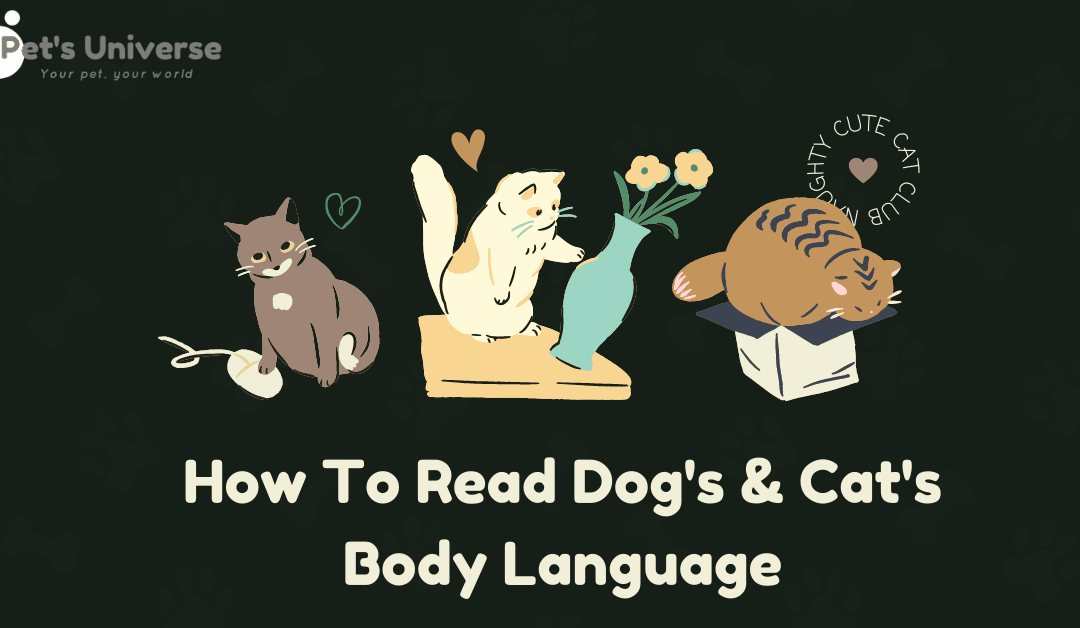Understanding the body language of your dog or cat can help you improve your relationship with them and ensure their well-being. It can also help you anticipate and prevent potential problems or conflicts. In this article, we will explore the most common body language cues exhibited by dogs and cats and how to interpret them.
1. Posture and movement:
One of the most obvious ways that dogs and cats communicate is through their posture and movement. A relaxed, confident animal will often stand with their body and tail held high, while a fearful or anxious animal may try to make themselves look smaller by crouching down or tucking their tail between their legs.
A wagging tail is often associated with happiness, but it can also indicate arousal or excitement. A slow wag may indicate a relaxed or friendly dog, while a fast wag may indicate arousal or a desire to play. A cat’s tail, on the other hand, is typically a good indicator of their mood. If a cat’s tail is straight up, they are likely feeling confident and friendly. If it is puffed up or twitching, they may be feeling threatened or agitated.
2. Facial expressions:
Dogs and cats also communicate through their facial expressions. A relaxed animal will often have a relaxed mouth and nose, while a tense or anxious animal may have a tense or wrinkled forehead and a tight mouth.
Dogs may also show their teeth as a sign of aggression or as a way to assert their dominance. Cats may bare their teeth in a similar way, but it is more commonly seen as a sign of fear or aggression.
3. Ear and eye movements:
The position and movement of a dog or cat’s ears can also provide clues about their mood and intentions. Ears that are held upright and forward may indicate interest or attention, while ears that are laid flat against the head may indicate fear or aggression.
Cats’ eyes can also provide valuable information about their mood. Dilated pupils may indicate arousal or aggression, while constricted pupils may indicate fear or relaxation.
4. Vocalization:
Dogs and cats also communicate through vocalizations, such as barking, meowing, growling, and purring. A dog’s bark may indicate excitement, arousal, or a desire to communicate, while a growl may indicate aggression or a warning.
Cats may meow as a way to communicate with their owners or to express their needs, such as wanting food or attention. Purring is often a sign of contentment or relaxation, but it can also occur when a cat is feeling threatened or stressed.
5. Touch:
Touch can also be an important form of communication for dogs and cats. Dogs may lean against their owners as a sign of affection or as a way to assert their dominance. Cats may rub against their owners as a sign of affection or to mark their territory with scent.
6. Context:
It’s important to consider the context in which an animal’s body language is being displayed. For example, a dog that is wagging its tail and showing its teeth may be displaying dominant behavior if it is in a one-on-one confrontation with another dog, but it may be displaying friendly behavior if it is greeting its owner.
7. Training and socialization:
Proper training and socialization can also play a role in how a dog or cat communicates and responds to different situations. A well-trained and socialized animal is more likely to exhibit appropriate body language and be more responsive to cues from their owner.
In conclusion, understanding the body language of your dog or cat can help you improve your relationship with them and ensure their well-being.
